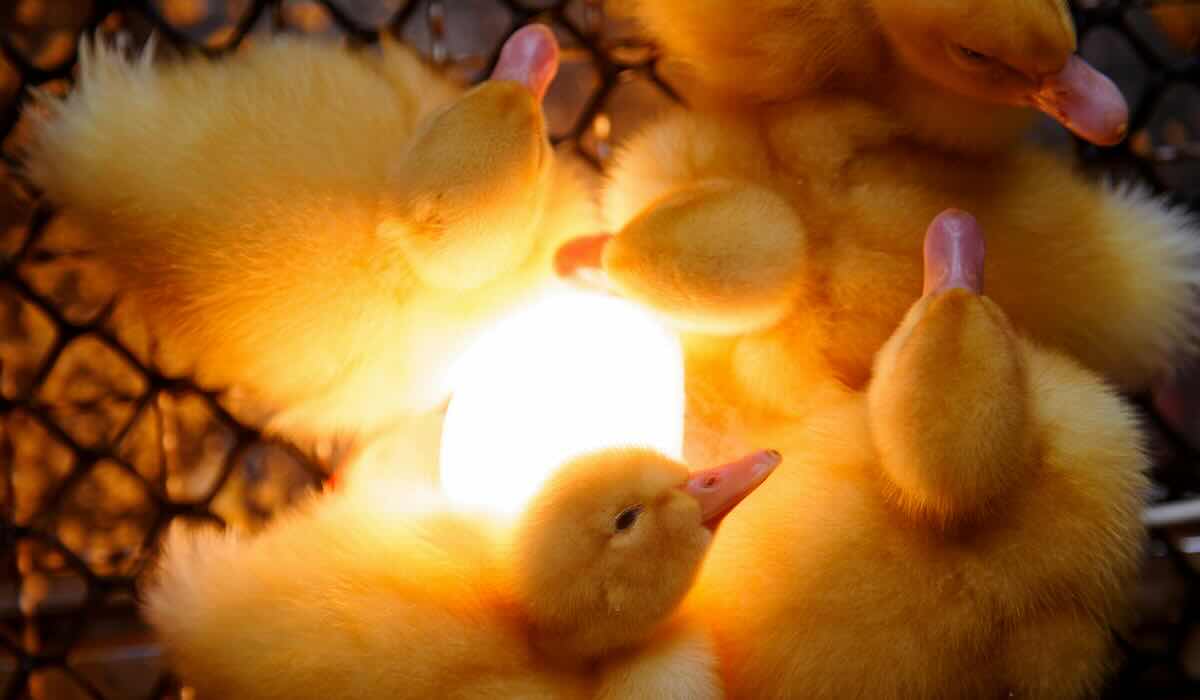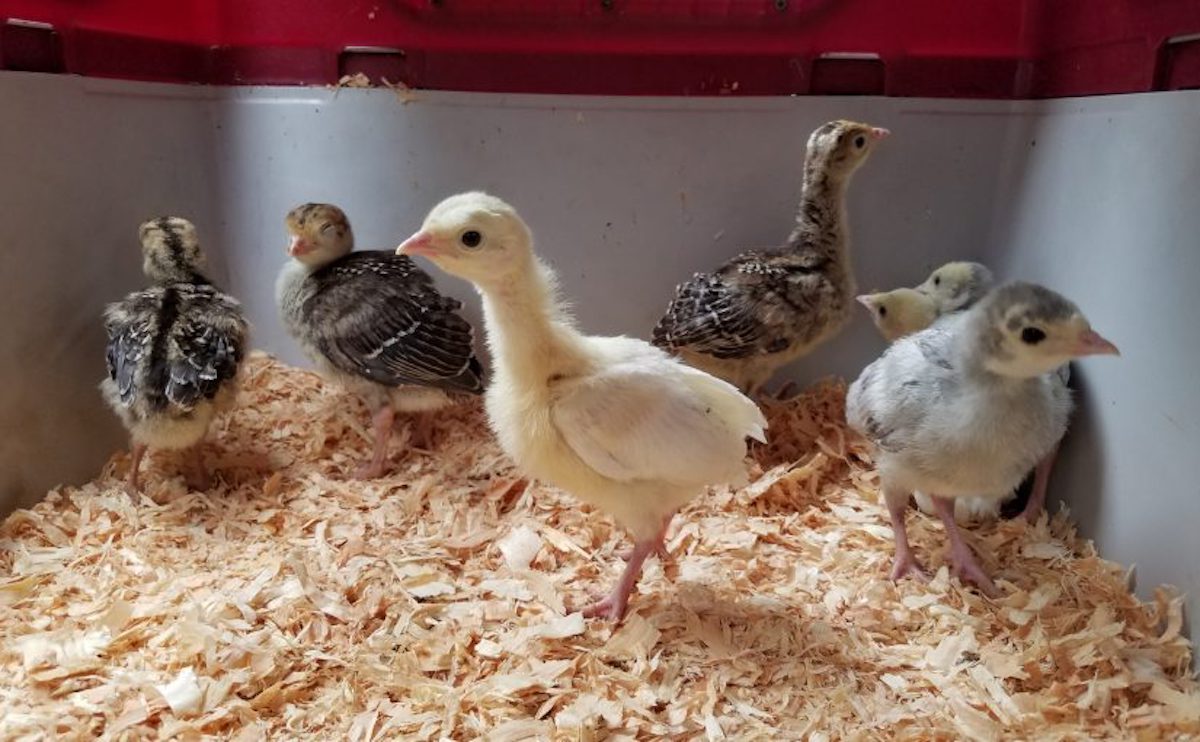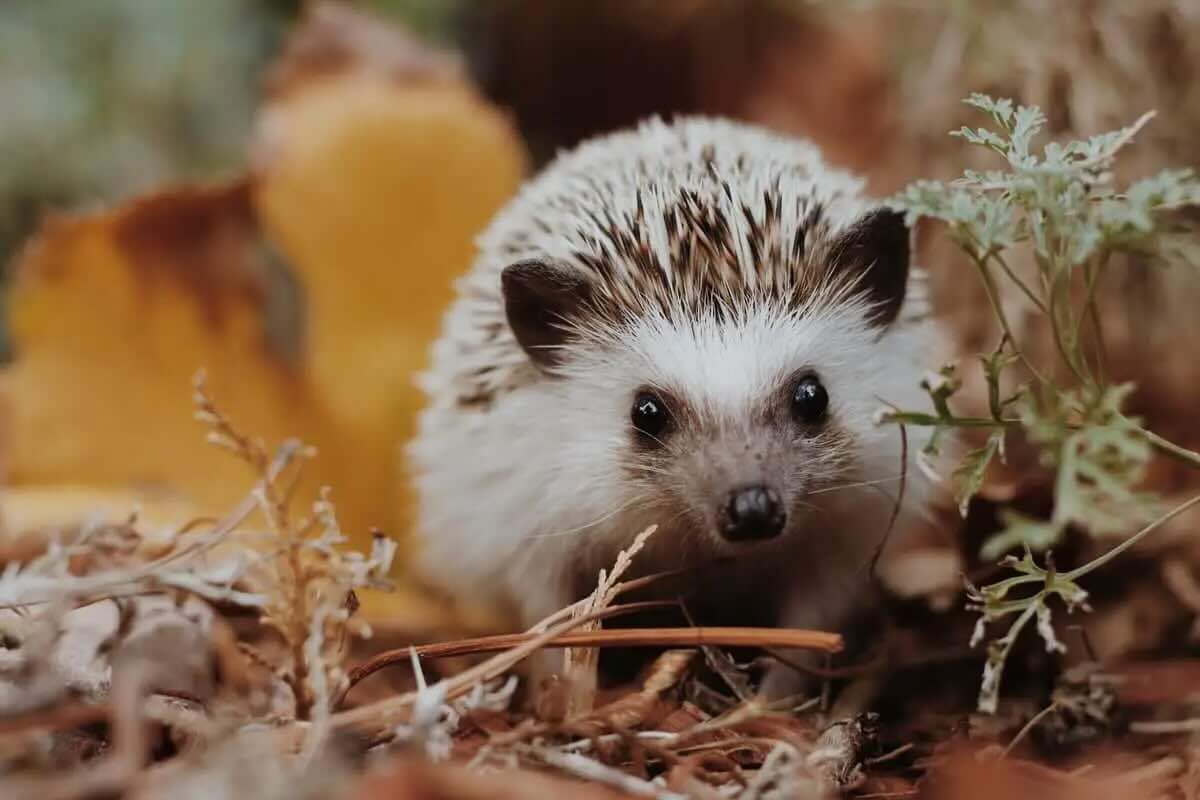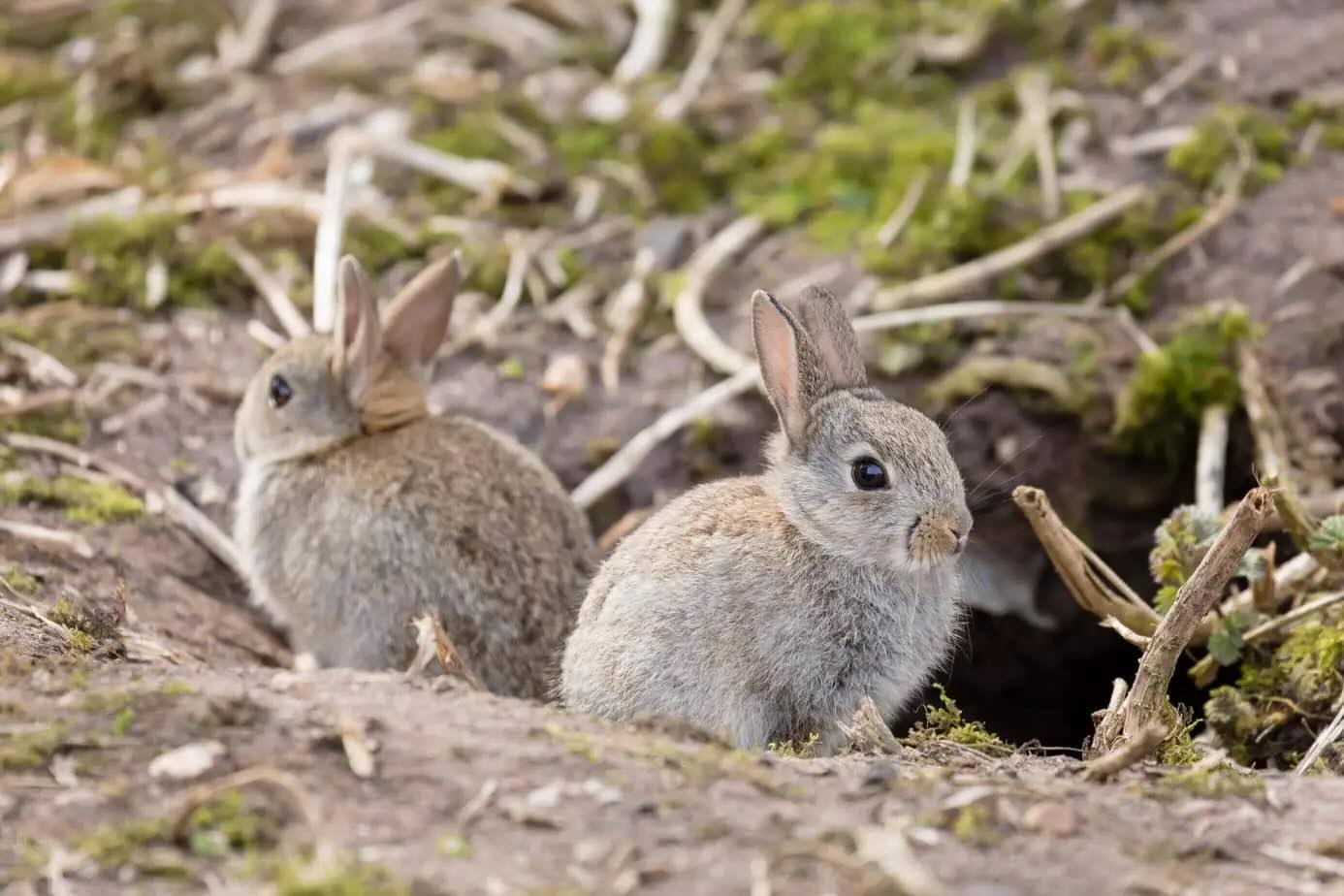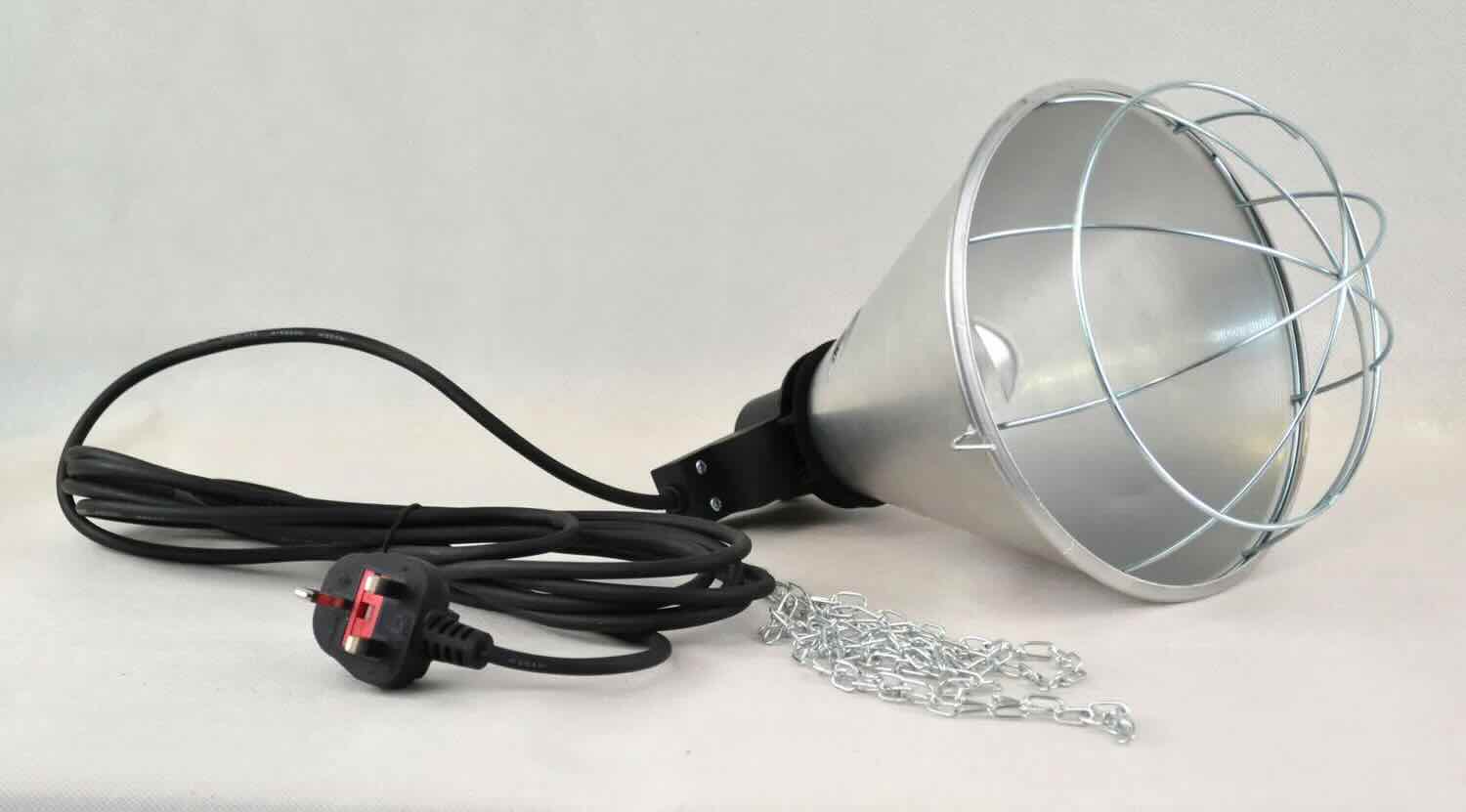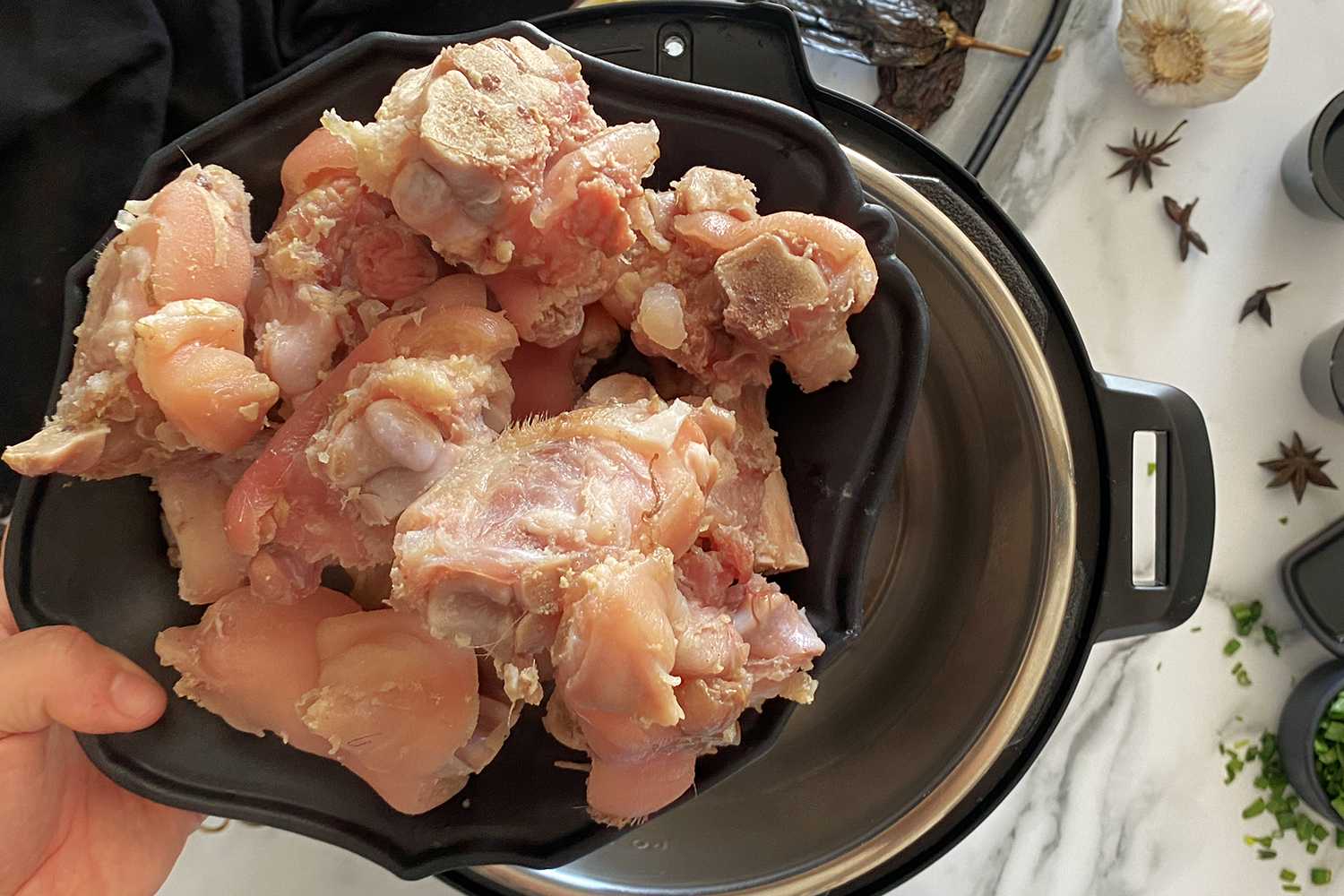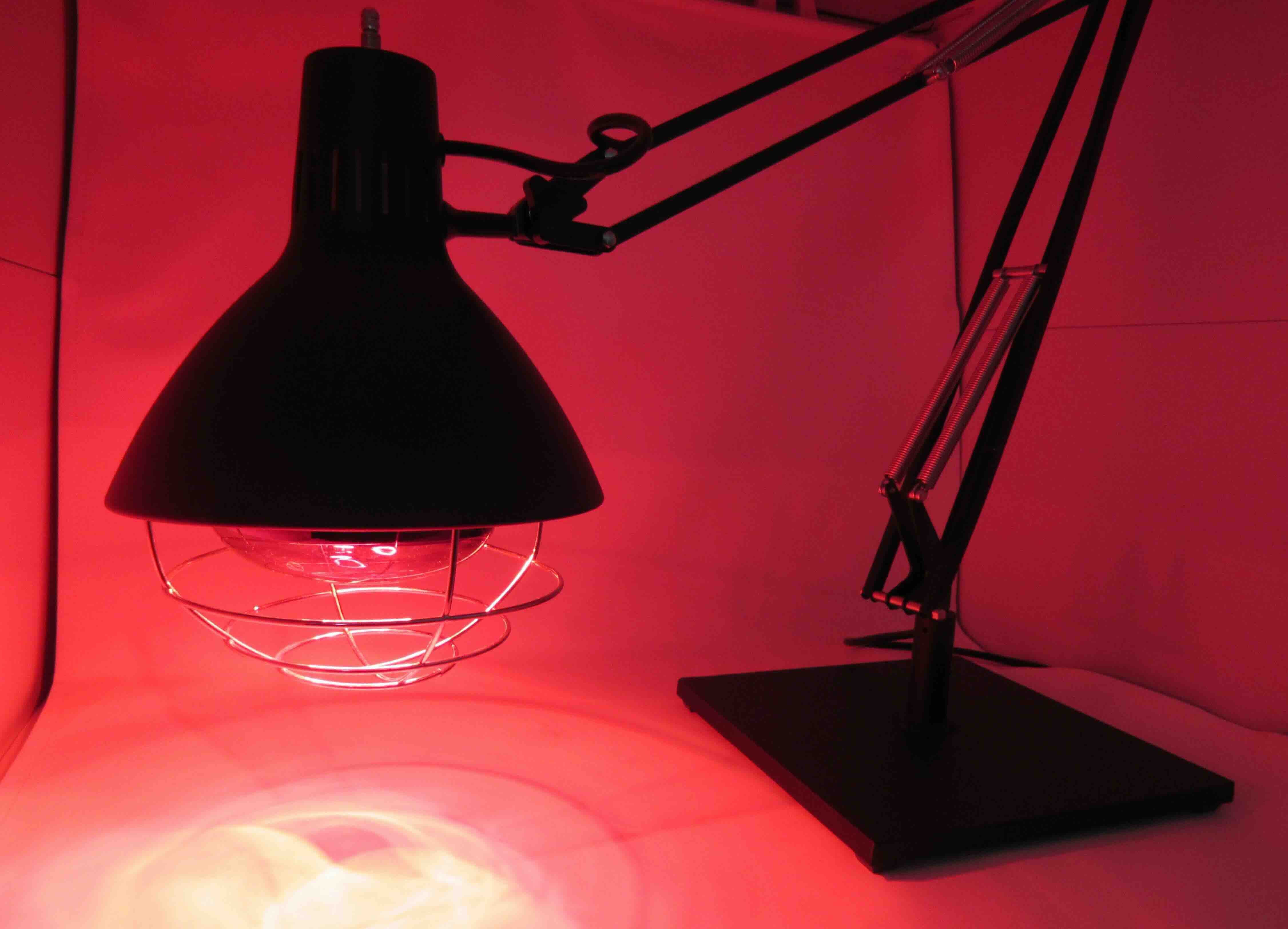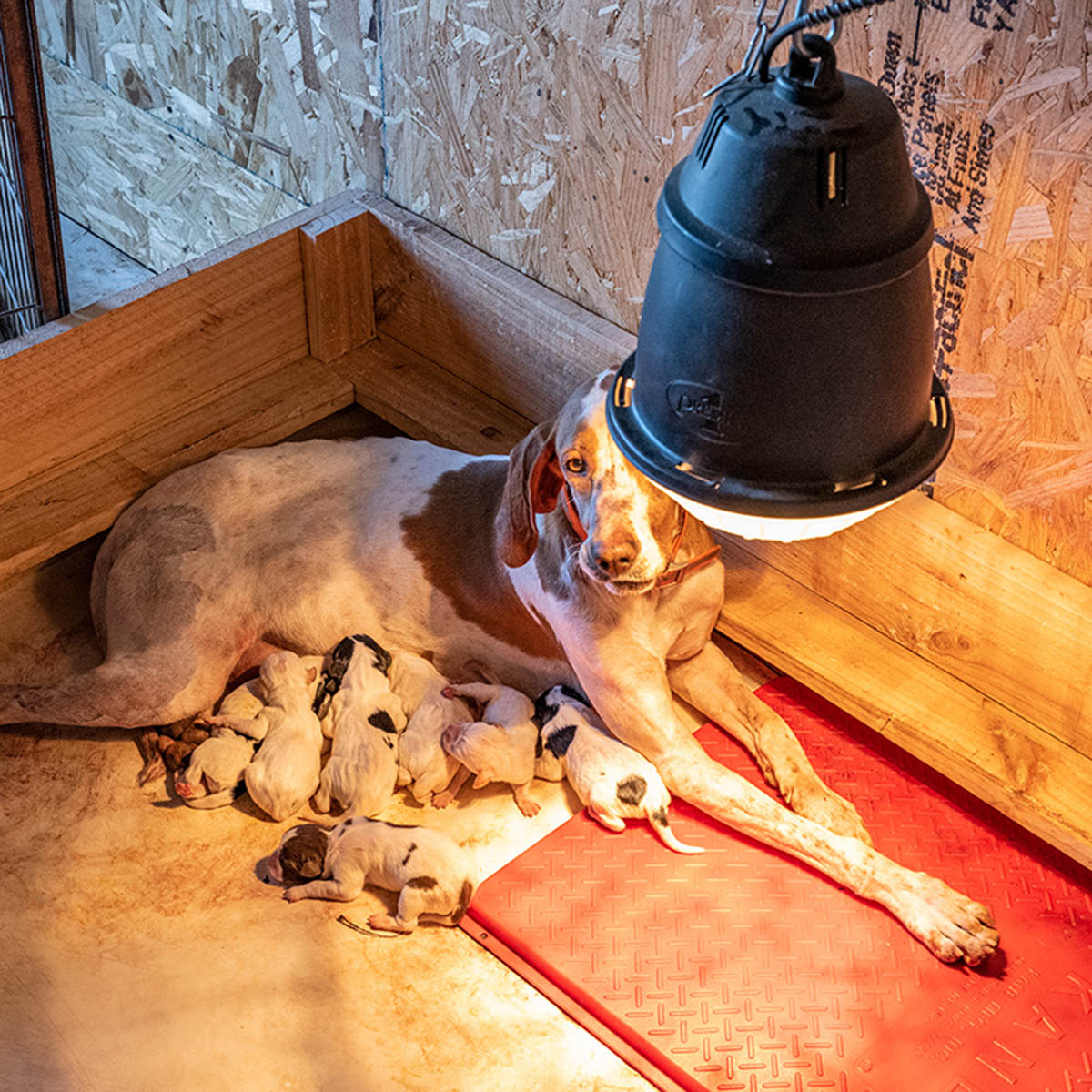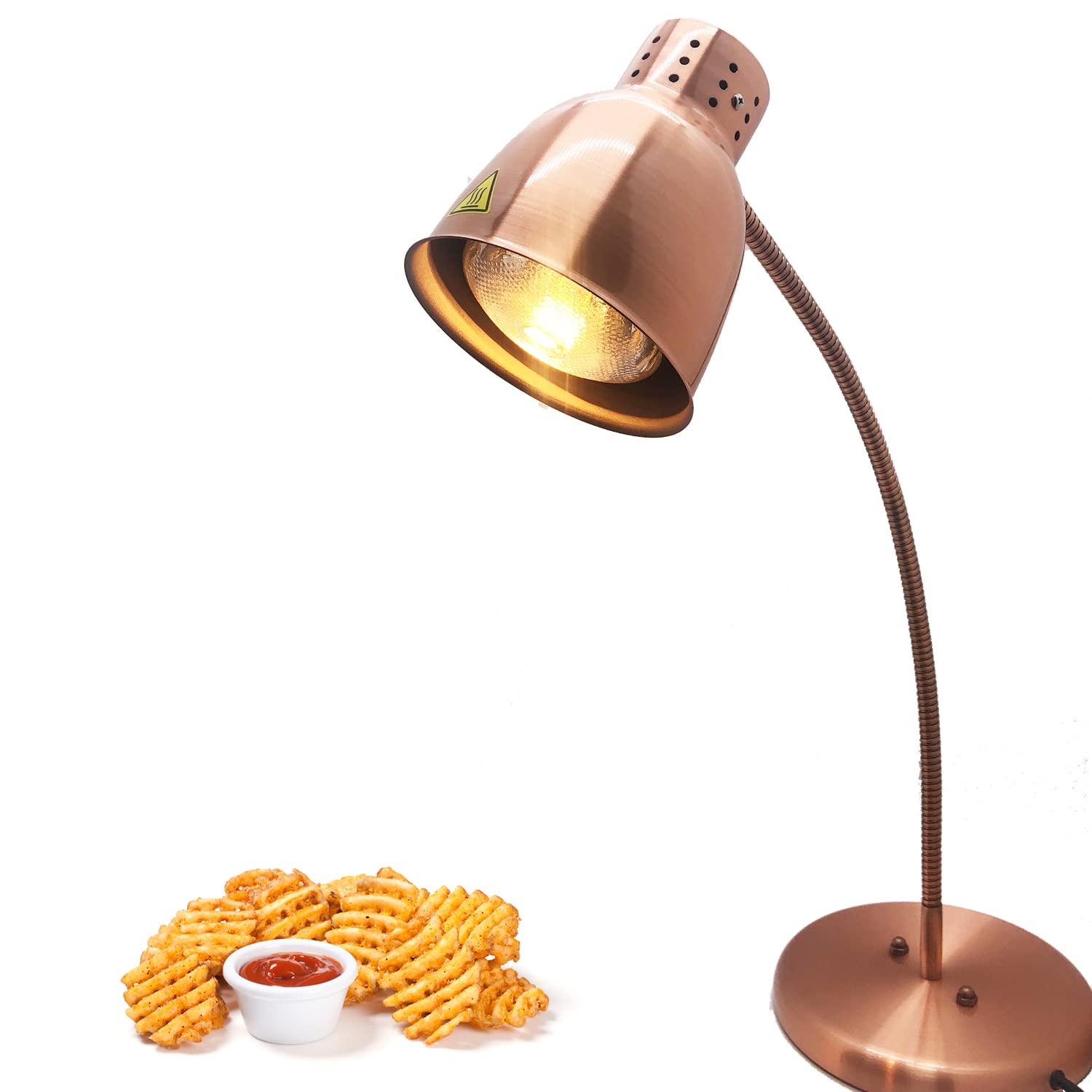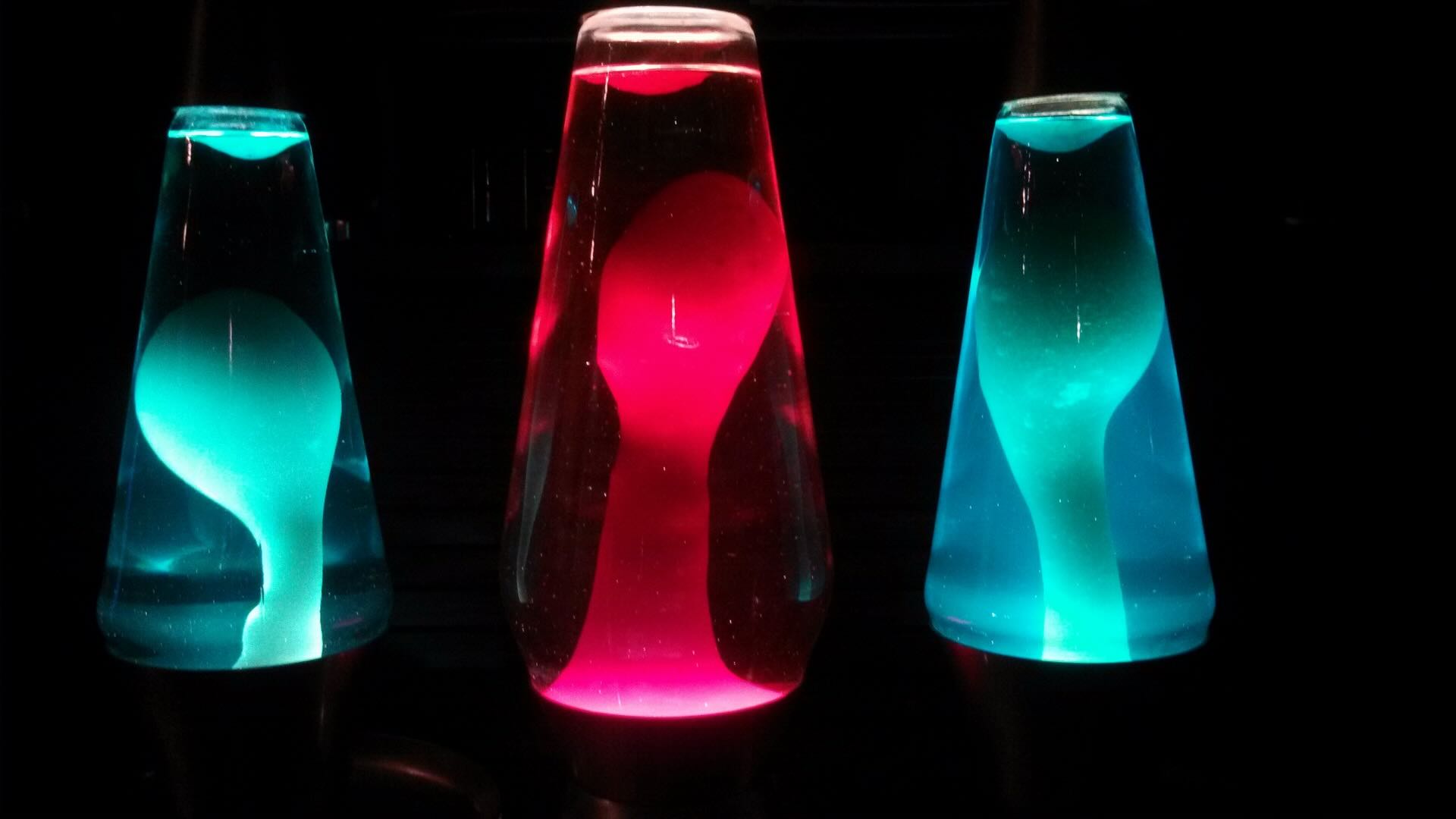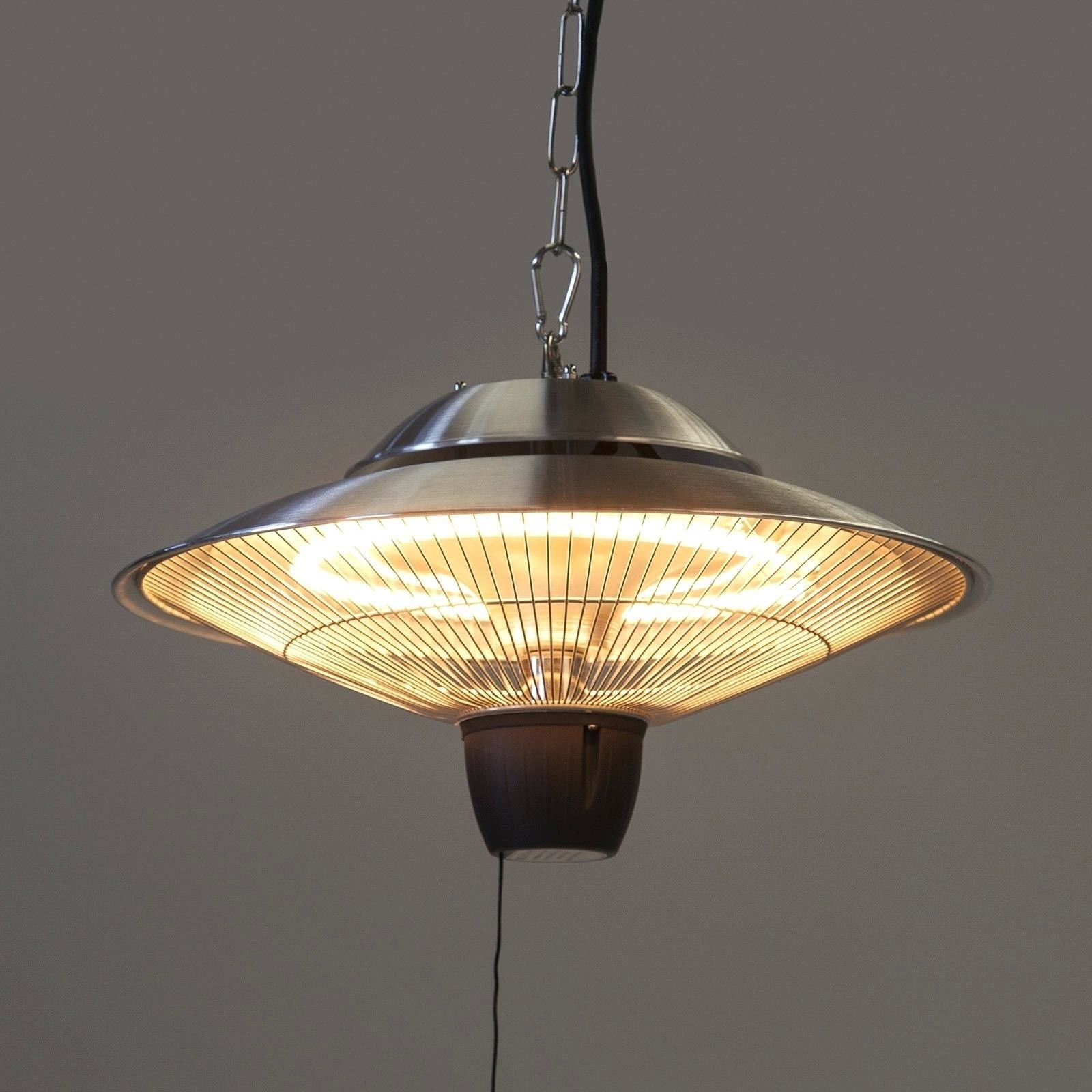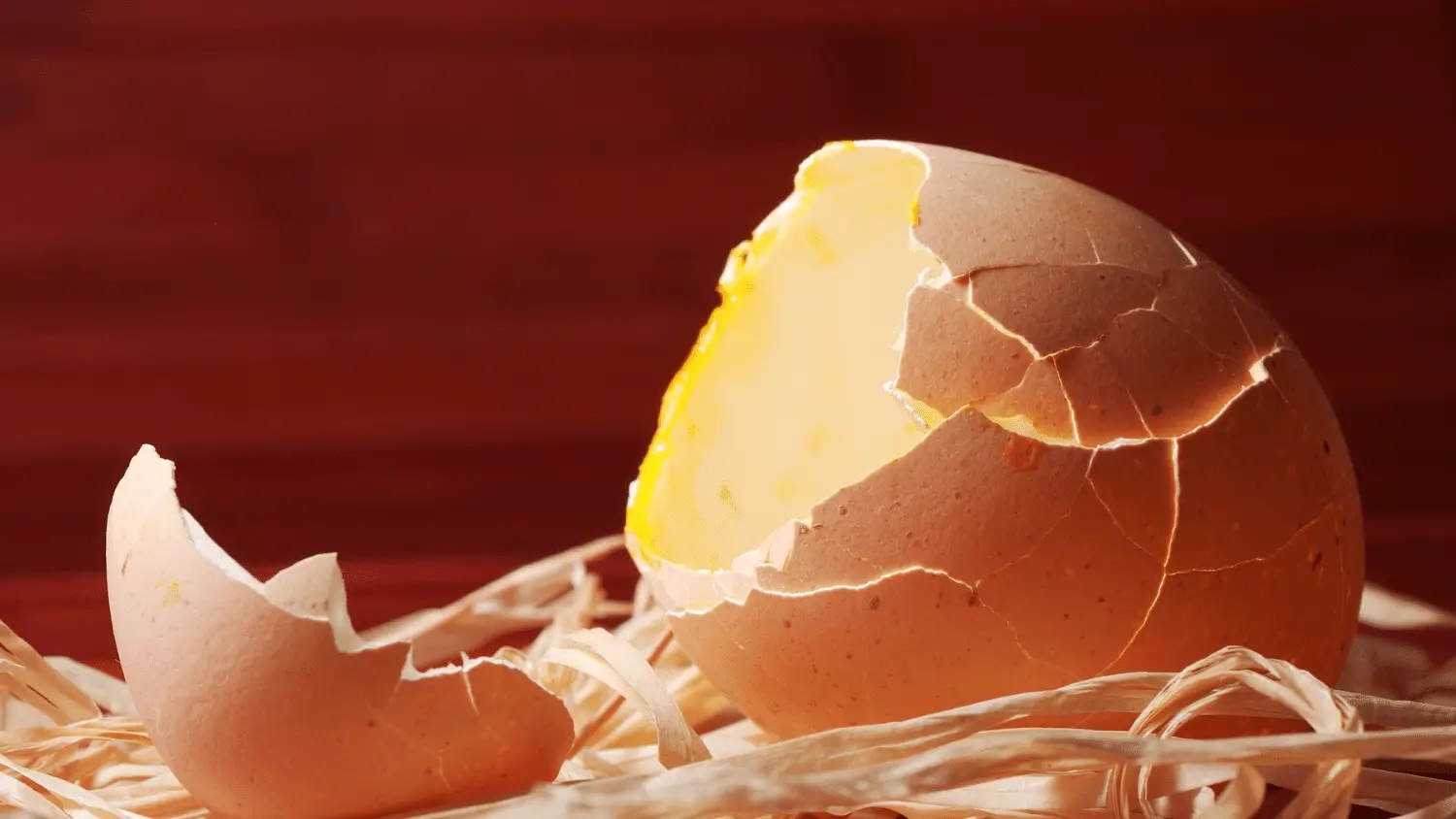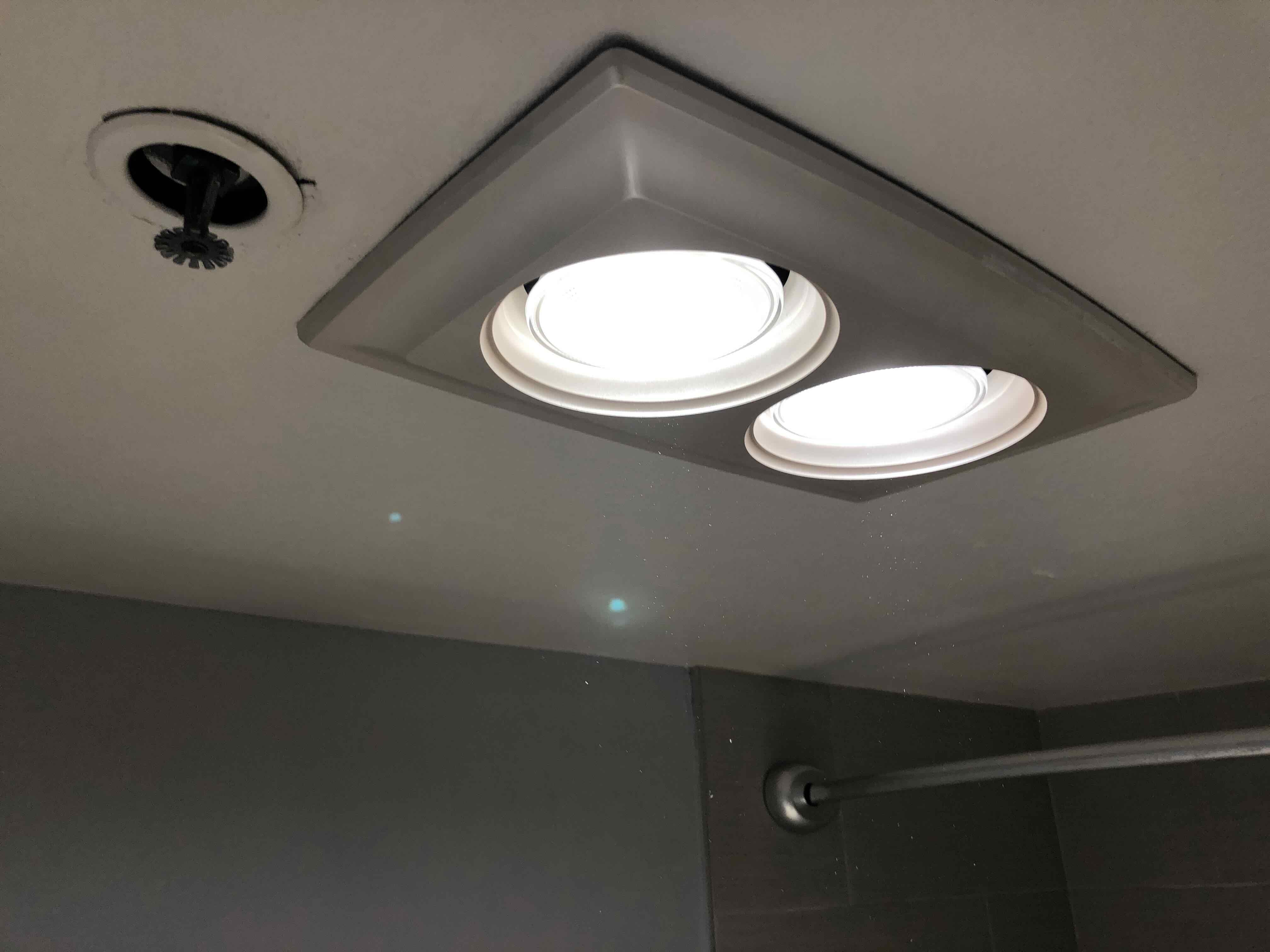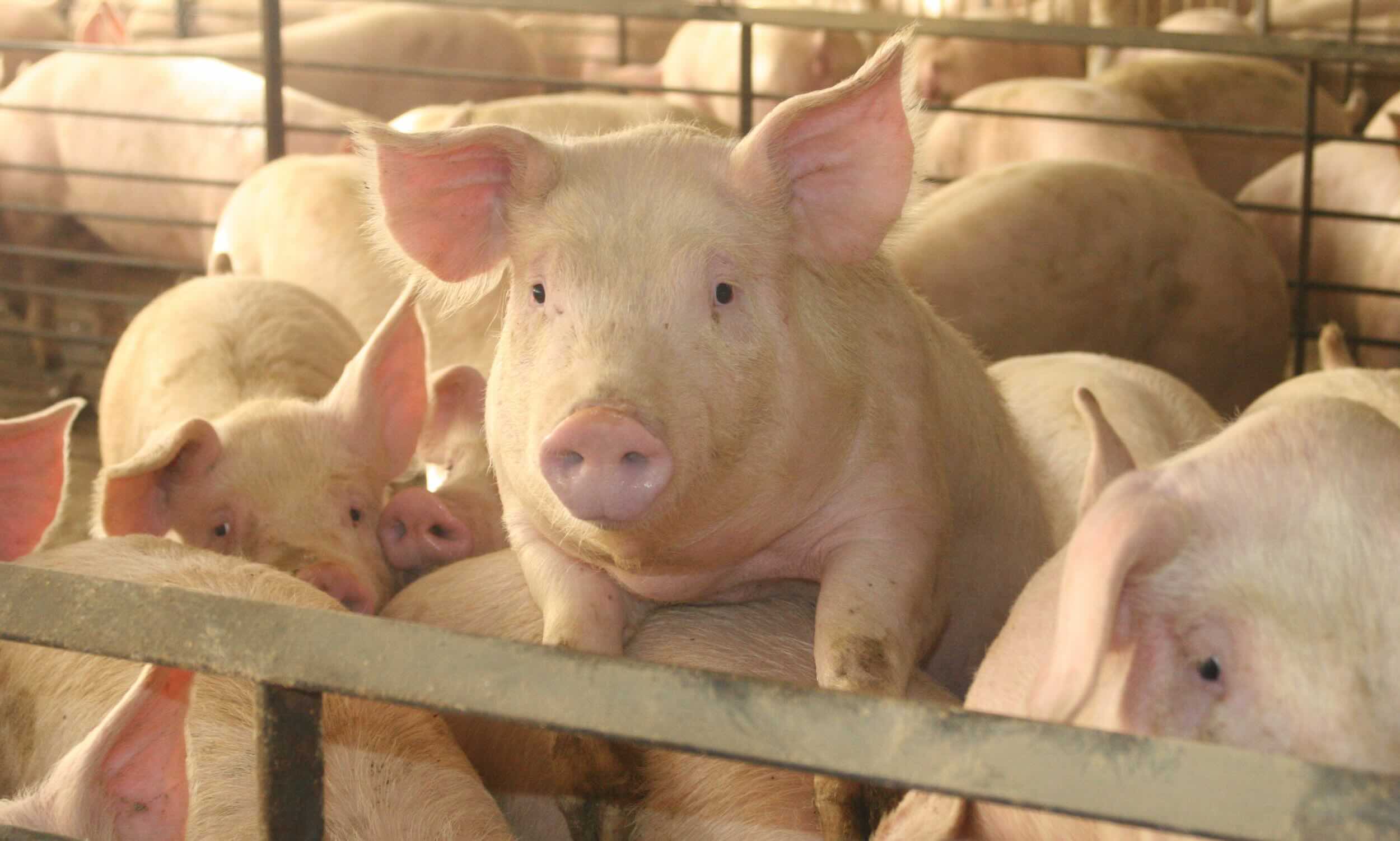

Furniture
How Long Do Pigs Need A Heat Lamp
Modified: January 9, 2024
Find out the ideal duration for using a heat lamp for pigs. Get expert guidance on pig farming and raising pigs. Shop now for top-quality furniture.
(Many of the links in this article redirect to a specific reviewed product. Your purchase of these products through affiliate links helps to generate commission for Storables.com, at no extra cost. Learn more)
Introduction
When it comes to raising pigs, providing the right environment is crucial for their health and well-being. One important aspect of creating a suitable environment is ensuring proper temperature control. Pigs, especially piglets, are sensitive to temperature fluctuations and need warmth to thrive.
Heat lamps play a vital role in maintaining the ideal temperature for pigs, particularly during the colder months. These lamps emit heat and provide a source of warmth that replicates the natural conditions piglets would experience under a sow’s care. This article will delve into the factors that influence the duration of heat lamp use for pigs at different stages of their growth.
Key Takeaways:
- Providing the right heat lamp duration for pigs at different growth stages is crucial for their well-being. Understanding factors like age, behavior, and environmental conditions is key to creating an optimal environment.
- Farmers should prioritize safety when using heat lamps for pigs, ensuring secure mounting, safe distances, and regular inspections. Balancing heat lamp duration and safety measures promotes a conducive environment for pig growth.
Read more: How Long Do Quail Need A Heat Lamp
Importance of Heat Lamps for Pigs
Heat lamps are essential for the well-being of pigs, as they create a warm and comfortable environment for them to thrive. Here are some key reasons why heat lamps are important in pig farming:
- Temperature Regulation: Pigs, especially piglets, have limited ability to regulate their body temperature. For the first few weeks of their lives, they rely on external sources of heat to stay warm. Heat lamps provide the necessary warmth to keep piglets comfortable and prevent them from suffering from hypothermia.
- Preventing Stress: Pigs, like any other animals, experience stress when exposed to extreme temperature conditions. Heat lamps ensure that pigs are kept within their thermal comfort zone, reducing stress and promoting overall health and growth.
- Promoting Growth: Maintaining the right temperature is crucial for optimal growth in pigs. When piglets are comfortable and warm, they can devote their energy to growth and development, resulting in healthier and heavier animals.
- Enhancing Feed Conversion: Pigs require energy to maintain their body temperature. By providing supplemental heat through lamps, the energy expenditure for thermoregulation is reduced. This allows them to allocate more energy towards feed utilization and conversion, ultimately improving their feed efficiency.
- Protecting Newborn Piglets: Piglets are particularly vulnerable during their first few weeks of life. Heat lamps create a cozy environment that mimics the warmth provided by a sow, ensuring the survival and well-being of these fragile newborns.
Heat lamps are a valuable tool for pig farmers, providing the necessary warmth and comfort to support the growth and health of their animals. By investing in quality heat lamps and using them effectively, farmers can create ideal conditions for their pigs and optimize their farming operations.
Factors Affecting Heat Lamp Duration
The duration for which heat lamps need to be used for pigs can vary based on several factors. Understanding these factors is essential for providing the right amount of warmth and ensuring the well-being of the animals. Here are some key factors that can influence the duration of heat lamp use for pigs:
- Age of the Pigs: The age of the pigs is a crucial factor when determining the duration of heat lamp use. Younger piglets require more warmth compared to older pigs. As they grow and develop, their ability to regulate body temperature improves, reducing the need for constant heat from lamps.
- Ambient Temperature: The existing environmental temperature plays a significant role in determining the duration of heat lamp use. In colder climates or during the winter months, pigs may require longer exposure to heat lamps to maintain the desired temperature. Conversely, in milder climates or during the summer season, the duration of heat lamp use may be shorter.
- Piglet Behavior: Observing the behavior of the piglets can provide valuable insights into their comfort level. If piglets huddle closely together under the lamp, it indicates that they still require warmth. However, if piglets start spending more time away from the heat source and explore the pen, it suggests that they are becoming less reliant on the heat lamp.
- Ventilation: Proper ventilation is necessary to maintain a healthy environment for pigs. Adequate airflow helps prevent the buildup of humidity, ammonia, and bacteria. However, it is crucial to strike a balance between ventilation and heat retention. Insufficient ventilation can lead to heat accumulation, reducing the need for heat lamps. On the other hand, excessive ventilation can result in heat loss, necessitating longer use of heat lamps.
- Pig Housing: The type of housing system used for pigs can affect heat lamp duration. Different housing systems have varying insulation properties and may require adjustments in heat lamp usage accordingly. Factors such as the type of flooring, the presence of bedding materials, and the overall design of the housing can impact temperature control and determine the duration of heat lamp use.
By considering these factors and regularly monitoring the pigs’ behavior and comfort level, farmers can determine the appropriate duration of heat lamp use for their animals. It is important to strike a balance between providing sufficient warmth and gradually reducing reliance on heat lamps to promote the pigs’ natural development and transition towards independent thermoregulation.
Temperature Requirements for Piglets
Piglets have specific temperature requirements to ensure their optimal growth and health. Maintaining the right temperature is crucial during their early weeks of life when they are most vulnerable. Here are the recommended temperature ranges for piglets at different stages:
- Newborn Piglets: For the first few days after birth, piglets require a warm and cozy environment. The temperature in the farrowing pen should be around 95°F (35°C) to 100°F (38°C). This high temperature helps them adjust to being away from their mother and maintains their body heat.
- One Week Old Piglets: As piglets grow and become more active, the temperature in the farrowing pen can be gradually reduced. By the end of the first week, the temperature should be around 85°F (29°C) to 90°F (32°C).
- Two to Three Week Old Piglets: At this stage, piglets are becoming more independent and can tolerate slightly lower temperatures. The temperature in the farrowing pen can be reduced to around 80°F (27°C) to 85°F (29°C).
- Three to Four Week Old Piglets: Piglets at this stage are more developed and require less supplemental heat. The temperature in the farrowing pen can be further reduced to around 75°F (24°C) to 80°F (27°C).
It is important to note that these temperature ranges are general guidelines and may vary depending on factors such as breed, health status, and environmental conditions. Regular monitoring of piglet behavior and adjusting the heat lamp duration and temperature is necessary to ensure their comfort.
Additionally, it is important to provide a warm, dry, and draft-free area for piglets to rest and sleep. Proper bedding materials, such as straw or wood shavings, can help insulate the floor and provide additional warmth. Consistently monitoring the pigs’ behavior and conducting regular temperature checks will help farmers ensure that piglets are comfortable and thriving in their environment.
Duration of Heat Lamp Use for Piglets
The duration of heat lamp use for piglets depends on various factors, including their age, environmental conditions, and individual needs. As piglets grow and develop, they gradually become less reliant on supplemental heat from lamps. Here is a general guideline for the duration of heat lamp use for piglets at different stages:
- Newborn to One Week Old: During the first week of life, piglets require constant warmth. Heat lamps should be used 24/7 to maintain a temperature range of 95°F (35°C) to 100°F (38°C) in the farrowing pen. This replicates the warm and cozy environment they would experience under a sow’s care.
- One to Three Weeks Old: As piglets grow older, their need for constant heat gradually decreases. At around one week old, the temperature in the farrowing pen can be reduced to 85°F (29°C) to 90°F (32°C) during the day and slightly lower at night. Heat lamps should still be provided, but their use can be reduced to 12-16 hours per day.
- Three to Four Weeks Old: By this stage, piglets are becoming more independent and are better able to regulate their body temperature. The temperature in the farrowing pen can be lowered to 80°F (27°C) during the day and 75°F (24°C) at night. Heat lamps can be used for approximately 8-12 hours per day.
- Four Weeks and Older: Piglets at this stage are more developed and have improved thermoregulation abilities. The temperature in the farrowing pen can be gradually reduced to room temperature, typically around 70°F (21°C) to 75°F (24°C). Heat lamps are no longer necessary as long as the ambient temperature is within the recommended range.
It’s important to note that these are general guidelines, and the actual duration of heat lamp use may vary depending on individual piglet needs and environmental conditions. Regular monitoring of piglet behavior, such as their huddling patterns and activity levels, can provide valuable insights into their thermal comfort. Adjustments to the duration and intensity of heat lamp use should be made accordingly to ensure the well-being and development of the piglets.
Properly transitioning piglets from heat lamp reliance to independent thermoregulation is crucial for their long-term health and resilience. Gradual weaning off heat lamps, coupled with observing piglet behavior and ensuring favorable environmental conditions, will help piglets adapt successfully and thrive as they grow.
Pigs need a heat lamp for the first 2-3 weeks of life to maintain a temperature of 85-90°F. After that, they can regulate their own body temperature.
Duration of Heat Lamp Use for Weaners
Weaning is a significant milestone in the life of a pig, as it marks the transition from relying on the sow’s milk to consuming solid feed. During this stage, weaners require a different approach when it comes to heat lamp use. Here is a general guideline for the duration of heat lamp use for weaners:
- Immediate Post-Weaning Period: After weaning, it is common for weaners to feel stressed and experience a drop in body temperature. Providing a warm and comfortable environment is crucial to support their adjustment. Heat lamps should be used initially for around 7-10 days after weaning to help weaners maintain their body temperature.
- Gradual Reduction: As weaners acclimate to their new diet and surroundings, their need for supplemental heat diminishes. The duration of heat lamp use can be gradually reduced over a period of 2-3 weeks. From the initial 7-10 days, farmers can decrease the use of heat lamps to 6-8 hours a day, preferably during the cooler night hours.
- Observing Piglet Behavior: Monitoring weaner behavior is crucial during the heat lamp transition period. If weaners huddle closely together or show signs of discomfort, such as shivering or extended periods in the resting area, it may indicate that they still require additional warmth. Farmers should adjust the duration and intensity of heat lamp use accordingly to ensure the weaners’ well-being.
- Room Temperature Adaptation: Ultimately, the goal is to help weaners adapt to room temperature conditions without the need for heat lamps. By the end of the transition period, which typically lasts about 2-3 weeks post-weaning, weaners should be able to maintain their body temperature without supplemental heat. They should be comfortable and exhibit normal behavior even without the use of heat lamps.
It is important to note that the specific duration of heat lamp use for weaners may vary depending on factors such as the ambient temperature, housing conditions, and individual pig behavior. Regular observation and adjustment are essential to ensure the weaners’ comfort and well-being throughout the transition period.
By gradually reducing the reliance on heat lamps, farmers can help weaners adapt to room temperature conditions and encourage their natural thermoregulatory abilities. Providing a comfortable and stress-free environment during this transition period is crucial for the successful growth and development of weaners.
Duration of Heat Lamp Use for Growers and Finishers
As pigs progress from the weaning stage, they continue to grow and mature into growers and finishers. At this stage, their heat requirements change, and the duration of heat lamp use can be adjusted accordingly. Here is a general guideline for the duration of heat lamp use for growers and finishers:
- Early Grower Stage: During the early growth stage, growers still benefit from a warm and comfortable environment. Heat lamps can be used for approximately 2-3 weeks post-weaning to ensure a smooth transition. The duration of heat lamp use can be gradually reduced from the initial 7-10 days to 4-6 hours per day.
- Mid to Late Grower Stage: As growers mature, their ability to regulate body temperature improves. By this stage, they should be acclimated to room temperature conditions without the need for supplemental heat during the day. Heat lamps can be used for approximately 2-3 hours per day during the cooler night hours if the ambient temperature drops significantly.
- Finisher Stage: Finishers are nearing their market weight and can generally tolerate room temperature conditions without the need for heat lamps. At this stage, the duration of heat lamp use can be reduced to as needed, typically during extreme cold weather or if individual pigs show signs of discomfort.
- Observing Pig Behavior: Monitoring pig behavior is crucial as growers progress into the finisher stage. If pigs huddle together, exhibit signs of huddling near heat sources, or show signs of discomfort, it may indicate that supplemental heat is still needed. The duration and intensity of heat lamp use should be adjusted accordingly to ensure their well-being.
It is important to remember that the specific duration of heat lamp use for growers and finishers may vary depending on factors such as the ambient temperature, housing conditions, pig behavior, and individual needs. Regular observation and adjustment are essential to ensure the comfort and well-being of the pigs.
By gradually reducing the reliance on heat lamps and promoting natural thermoregulation, growers and finishers can adapt to room temperature conditions and complete their growth cycle successfully. Providing a comfortable and stress-free environment during this stage is crucial for the overall health and productivity of the pigs.
Considerations for Heat Lamp Placement
Proper placement of heat lamps is essential to ensure that pigs receive the maximum benefit from the supplemental heat. Here are some key considerations when it comes to heat lamp placement:
- Height: Heat lamps should be positioned at an appropriate height to provide the right amount of heat without causing discomfort or posing a fire hazard. A good rule of thumb is to suspend the lamps around 18-24 inches above the pigs’ resting area. This placement allows for adequate heat distribution while minimizing the risk of the lamps being accidentally knocked down.
- Direction: It is important to direct the heat lamps towards the pigs’ resting area. This ensures that the heat is concentrated where it is needed the most. The angle of the lamps should be adjusted, if necessary, to ensure that the heat is evenly distributed over the area where the pigs spend most of their time.
- Avoiding Contact: Heat lamps should be positioned in a way that prevents direct contact between the pigs and the lamps. Contact with the hot surface can lead to burns or injuries. To avoid this, the lamps should be placed out of reach of the pigs, such as by using secure fixtures or hanging them from the ceiling.
- Uniform Distribution: If multiple heat lamps are used, they should be evenly spaced to provide uniform heat distribution throughout the pen. This ensures that all pigs have equal access to the warmth and reduces the likelihood of overcrowding in one specific area.
- Electricity Safety: When placing heat lamps, it is important to consider the electrical aspects and ensure proper safety measures. The lamps should be securely installed and the wiring should be safely managed to avoid any electrical hazards. It is recommended to consult a professional electrician for guidance on safe installation practices.
Regular monitoring of heat lamp placement and the pigs’ behavior is crucial to ensure that pigs are receiving adequate warmth and are comfortable. Adjustments can be made as needed based on observations of pig behavior, such as if pigs are avoiding or crowding around certain areas of the pen.
By taking these considerations into account and ensuring proper heat lamp placement, farmers can provide a safe and effective heat source for their pigs and contribute to their overall well-being during colder periods.
Safety Precautions for Heat Lamp Use
While heat lamps are essential for providing warmth to pigs, it is crucial to prioritize safety to prevent accidents and ensure the well-being of both the animals and the farm. Here are some important safety precautions to consider when using heat lamps:
- Secure Mounting: Ensure that heat lamps are securely mounted in a way that prevents them from falling or being knocked over. Use sturdy fixtures or hang the lamps from the ceiling using appropriate hardware to minimize the risk of accidents.
- Keep a Safe Distance: Maintain a safe distance between the heat lamps and any flammable materials, such as straw, wood shavings, or bedding. This reduces the risk of fires or smoldering caused by contact with the heat source.
- Electrical Safety: When connecting heat lamps to electrical outlets, ensure that the wiring is properly installed and managed. Avoid overloading circuits and use appropriate extension cords that are rated for the intended usage. Regularly inspect the wiring and replace any damaged cords or sockets promptly.
- Monitor Heat Lamp Temperature: Regularly check the temperature of the heat lamps to ensure they are operating within a safe range. Avoid using heat lamps that become excessively hot, as this can increase the risk of burns or fires. Consider using heat lamps with built-in temperature controls or monitoring devices for added safety.
- Regular Inspections: Conduct regular inspections of the heat lamps to check for any signs of damage or wear. Inspect the cord, socket, and bulb for any cracks, frayed wires, or other issues that may pose a safety hazard. Replace faulty or damaged lamps immediately.
- Proper Ventilation: Ensure adequate ventilation in the pig housing area to prevent excessive heat buildup. Proper airflow helps maintain air quality and prevents the accumulation of harmful gases. However, it is crucial to strike a balance between ventilation and heat retention to avoid drafts and excessive heat loss.
- Supervision: Never leave heat lamps unattended. Regularly monitor the heat lamps and the behavior of the pigs to ensure their well-being. If any issues or anomalies are observed, take immediate action to address them and ensure the safety of the pigs.
- Emergency Preparedness: Have a fire extinguisher readily available in case of emergencies. Train farm personnel on proper fire safety protocols and procedures. Additionally, have a well-defined emergency plan in place that includes evacuation procedures and designated meeting points.
Implementing these safety precautions is crucial to minimize the risk of accidents and maintain a safe environment for both pigs and farm personnel. Regular vigilance, inspections, and prompt action are key to preventing potential hazards associated with heat lamp use.
By following these safety precautions and maintaining a proactive approach to safety, farmers can provide an optimal environment for their pigs while reducing the likelihood of accidents or incidents occurring.
Read more: How Long Do Guinea Keets Need A Heat Lamp
Conclusion
Heat lamps play a vital role in providing the necessary warmth and comfort for pigs at different stages of their growth. By understanding the factors influencing heat lamp duration, farmers can create an optimal environment that promotes the well-being and development of their pigs.
For piglets, heat lamps are essential during their early weeks of life when they are most vulnerable to temperature fluctuations. Gradually reducing the duration of heat lamp use as piglets grow allows them to develop their natural thermoregulation abilities.
Weaners, on the other hand, require heat lamps for a shorter duration after weaning as they adapt to room temperature conditions. Regular observation of piglet behavior and adjustment in heat lamp usage helps them successfully transition to independent thermoregulation.
As pigs progress into the grower and finisher stages, the duration of heat lamp use decreases. The focus shifts to providing a comfortable environment that allows them to thrive without relying on supplemental heat sources.
Proper heat lamp placement and safety precautions are crucial to ensure the well-being of both pigs and farm personnel. Secure mounting, safe distances, and regular inspections help prevent accidents and maintain a safe environment. Monitoring heat lamp temperature, proper ventilation, and emergency preparedness are also vital aspects for ensuring safety.
By balancing the duration of heat lamp use, monitoring pig behavior, and following safety guidelines, farmers can provide optimal warmth and create a conducive environment for their pigs’ growth and development.
Ultimately, the goal is to gradually transition pigs to independent thermoregulation, allowing them to thrive in their natural environments. By combining a comprehensive understanding of heat lamp usage with the well-being of the pigs, farmers can ensure the successful and sustainable growth of their pig farming operations.
Frequently Asked Questions about How Long Do Pigs Need A Heat Lamp
Was this page helpful?
At Storables.com, we guarantee accurate and reliable information. Our content, validated by Expert Board Contributors, is crafted following stringent Editorial Policies. We're committed to providing you with well-researched, expert-backed insights for all your informational needs.
